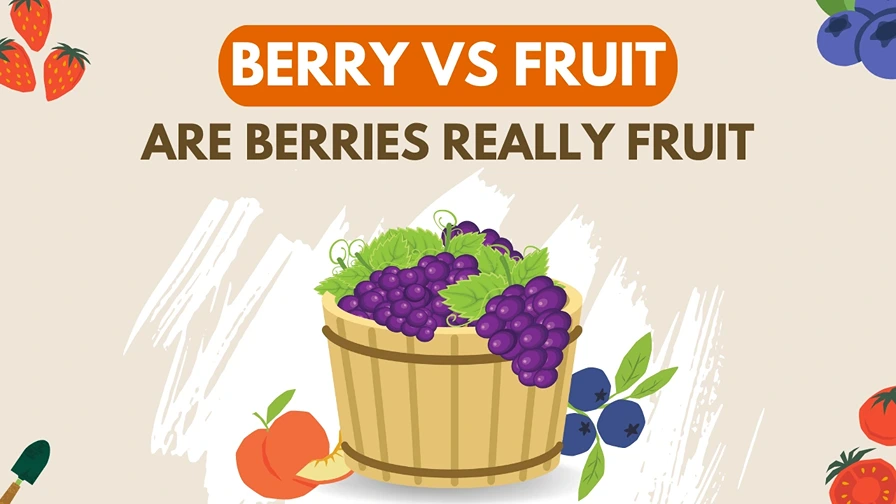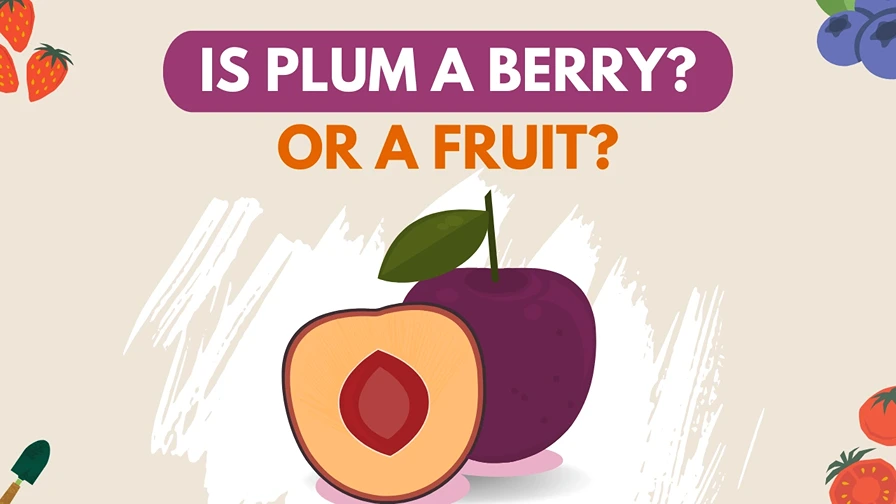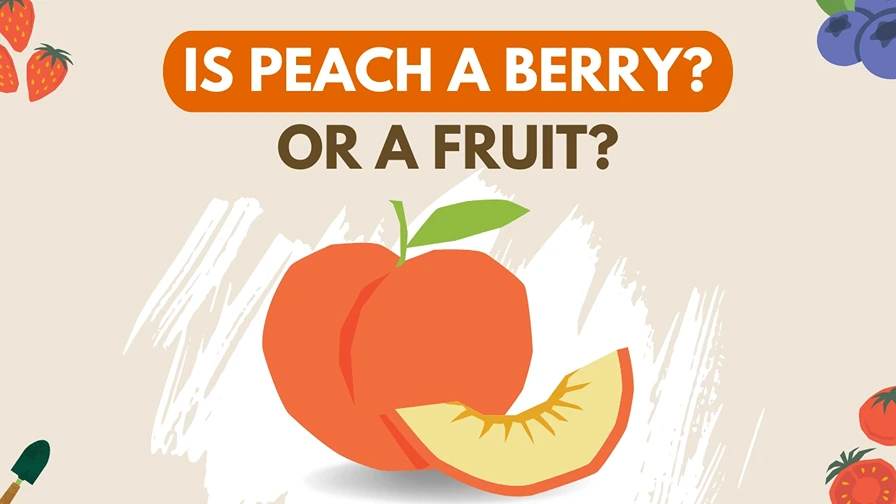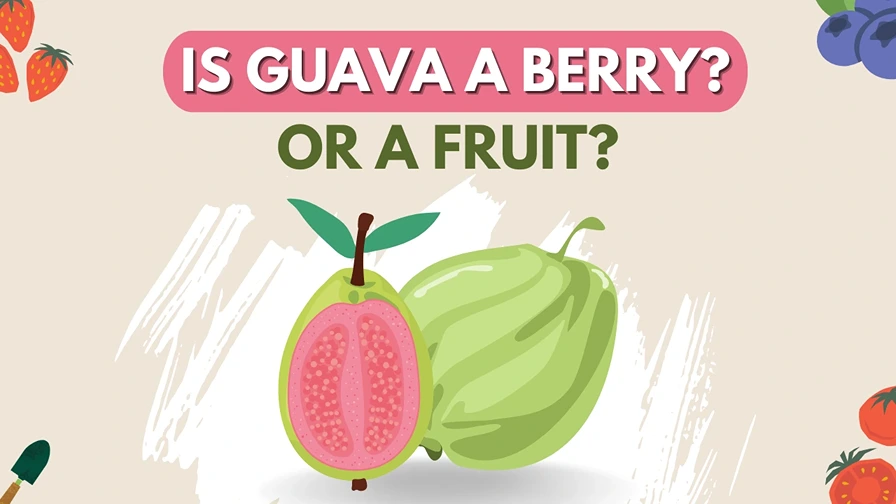Have you ever found yourself pondering over the classification of a lemon? Is lemon a berry or a citrus fruit?
The confusion surrounding this seemingly simple question has led to debates and differing opinions among botanists, horticulturists, and fruit enthusiasts.
So what is lemon: Yes, lemon is a type of berry classified as citrus fruit (Hesperidium).
But why is lemon not classified as a true berry and why is it a citrus fruit? Let’s explore these berry and fruit differences!
What is a Lemon?
Lemons, with their vibrant yellow color and tangy flavor, are fruits that have become an integral part of various cuisines and cultures worldwide.
Lemons, scientifically known as Citrus limon, belong to the Rutaceae family and are native to the warm regions of Asia.
These fruits have a rich history that dates back centuries, and their cultivation has spread to different parts of the globe due to their versatility and numerous uses.
Physical Characteristics of Lemons
Lemons are known for their distinct appearance, characterized by their smooth, bright yellow peel and elongated oval shape. They typically measure between 2 to 3 inches in diameter and weigh around 2 to 3 ounces.
The outer peel of a lemon, also known as the zest, is fragrant and contains essential oils that contribute to its unique aroma. Beneath the peel lies the fleshy pulp, which is divided into individual segments filled with juice. Lemons are renowned for their high acidity, giving them their unmistakable tart taste.
Cultivation of Lemons
Lemons thrive in warm climates and are cultivated in various regions around the world. They require a subtropical or Mediterranean climate to grow successfully. Some of the major lemon-producing countries include the United States, Italy, Spain, India, and Mexico.
Lemon trees are evergreen, with glossy leaves and fragrant white flowers. These trees can reach heights of up to 20 feet and produce fruits year-round, although they typically have peak seasons for harvesting.
To ensure optimal growth, lemon trees require well-drained soil, ample sunlight, and regular watering. Pruning and proper care are essential to maintain tree health and maximize fruit production.
Understanding Berries
Berries are a diverse and widely consumed category of fruits that encompass a range of delicious options. Let’s delve into the definition of berries and explore their unique characteristics to gain a better understanding of this fruit family.
Definition of a Berry
Botanically speaking, a berry is a type of fruit that develops from a single ovary of a flower, with the seeds embedded within the flesh. Unlike what many might assume, berries do not always fit the typical small, round, and colorful image associated with them.
Berries come in various shapes, sizes, and colors, and their defining characteristic is the fleshy pericarp, which surrounds the seeds. This means that berries can be small, like blueberries or grapes, or larger, like watermelons or pumpkins.
Characteristics of Berries
Berries possess several common characteristics that distinguish them from other types of fruits. These traits include:
- Single Ovary: Berries grow from the single ovary of a flower, unlike other fruits that grow from multiple ovaries
- Fleshy Pericarp: Berries have a soft and succulent outer layer that encompasses the seeds.
- Multiple Seeds: Unlike some other fruit types, berries contain multiple seeds embedded within their flesh.
Is Lemon a berry?
After learning about lemons and also about berries, let’s see the similarities and differences between lemons and berries.
Similarities Between Lemon and Berry
There are many similarities between the lemon and berry. Let’s explore these similarities that help us understand the connections between lemons and berries:
- Fleshy Pericarp: Both lemons and berries have a fleshy pericarp, which refers to the thick, edible part of the fruit that surrounds the seeds. This characteristic contributes to their juiciness and appealing texture.
- Edible Pulp: Both lemons and berries have edible pulp that surrounds the seeds. The pulp of lemons is tart and citrusy, while the pulp of berries can vary in taste from sweet to tart, depending on the specific berry variety.
- Seed-Containing: Both lemons and berries contain seeds, although their distribution within the fruit differs. Berries typically have seeds evenly distributed throughout the flesh, while lemon seeds are clustered in the central part of the fruit.
While lemons and berries have these similarities, it’s important to note that they also possess distinct characteristics that differentiate them. Lemons have unique qualities, while berries have their own set of defining features.
Let’s see the difference between lemon and berry.
Differences Between Lemon and Berry
When comparing lemons and berries, there are three key differences to consider:
- Outer Layer
- Lemon: Lemons have a distinct outer layer called the rind or zest, which is thick, leathery, and contains essential oil glands. The rind of a lemon is not typically consumed due to its bitter taste.
- Berry: While berries, such as blueberries, have a soft and often colorful outer skin that is edible and adds to the fruit’s overall flavor and texture. The skin of berries is typically thin and delicate.
- Carpel Layer
- Lemon: Lemons have a unique carpel layer that consists of several fleshy segments called carpels. These carpels contain juice sacs and are surrounded by an inner membrane, which separates them from the rest of the fruit.
- Berry: Berries do not have distinct carpels or separate internal structures. The flesh of a berry is usually uniform throughout, without any specific segmentation or internal membranes.
- Seed Size
- Lemon: Lemons have relatively large seeds that are often noticeable when the fruit is cut open. The seeds are pale yellow and ovoid in shape. They are larger compared to the small seeds typically found in berries.
- Berry: Berries usually contain numerous small seeds that are distributed evenly throughout the flesh. The seeds in berries are generally small and often go unnoticed while consuming the fruit.
These three differences highlight the contrasting characteristics between lemons and berries. Lemons have a leathery rind, distinctive carpel layer, and relatively large seeds.
In contrast, berries have a soft outer skin, no specific internal segmentation, and typically contain small seeds.
Understanding Citrus Fruits
Citrus fruits are a diverse and popular group of fruits known for their refreshing flavors and vibrant colors. Let’s explore the definition of citrus fruits and uncover their distinguishing features to shed light on the classification of lemons within this fruit family.
Definition of Citrus Fruits
Citrus fruits is a category of fruits that belong to the Rutaceae family and are characterized by their high vitamin C content and tangy taste. These fruits are typically juicy and known for their citrusy aroma, making them a favorite ingredient in various culinary creations.
Distinguishing Features of Citrus Fruits
Citrus fruits possess several key characteristics that set them apart from other fruit groups. These features include:
- Peel with Oil Glands: One defining feature of citrus fruits is the presence of oil glands in their peel, which release fragrant oils when the peel is scratched or squeezed.
- Pulpy Segments: Most citrus fruits are divided into easily separable segments, each filled with juice and enclosed by a thin membrane.
- Vibrant Colors: Citrus fruits display a wide range of vibrant colors, including shades of orange, yellow, and green.
- Citric Acid: Citrus fruits are named for their high content of citric acid, which contributes to their distinctive tangy taste.
- Health Benefits: Citrus fruits are renowned for their nutritional value, containing essential vitamins, minerals, and antioxidants that contribute to overall health and well-being.
Is Lemon A Citrus Fruit?
Lemons share several similarities with other citrus fruits, which further solidifies their classification within this fruit family. Here are some key similarities:
- Oil Glands: Lemons, along with other citrus fruits, possess oil glands in their peel, which release fragrant oils when the peel is scratched or squeezed.
- Juicy Pulp: Lemons, like many citrus fruits, have pulpy segments filled with juice, enclosed by a thin membrane.
- Separable Outer layer: Citrus fruit has a separable outer layer, that can be easily peeled off or removed from the juicy pulp. It also works as a protection for the juice inside.
- Citric Acid Content: Like other citrus fruits, lemons are rich in citric acid, contributing to their characteristic tangy taste.
- Vitamin C: Citrus fruits, including lemons, are renowned for their high vitamin C content, providing essential nutrients and potential health benefits.
After considering the similarities. Lemon can be classified as citrus fruit or hesperidium. Citrus fruit or Hesperidium is a specialized type of berry that has a tough, leathery rind and a pulpy interior divided into segments.
Lemons align more closely with this hesperidium classification rather than the true berry classification.
Examples of Citrus Fruits
The citrus fruit family includes a variety of well-known and widely consumed fruits. Some common examples of citrus fruits include:
- Oranges
- Grapefruits
- Tangerines
- Mandarins
- Limes
These fruits share certain characteristics, such as their tangy taste, vitamin C content, and citrusy fragrance, which are distinctively associated with the citrus fruit family.
The Verdict – Is Lemon A Berry or Citrus Fruit?
After exploring the characteristics of lemons, berries, and citrus fruits, it’s time to address the burning question: Is a lemon a berry or a citrus fruit?
The similarities shared with other citrus fruits, and the distinct qualities that set lemons apart from berries, it is clear that lemons fall under the category of citrus fruits.
Lemons exhibit the quintessential traits that align with the citrus fruit characteristics, including their high citric acid content, oil glands in the peel, pulpy segments, and vibrant yellow color.
So, due to similarities with berries and aligning with the characteristics of citrus fruit. Lemon is a type of berry called citrus fruit.
Conclusion
In conclusion, the classification of lemons as citrus fruits is clear and supported by their taxonomical categorization, botanical characteristics, and similarities with other citrus fruits. Lemons belong to the genus Citrus and are specifically classified as Citrus fruit or Hesperidium.
While lemon can be a type of berry it has some differences like the outer layer, which easily peels off and contain oil glands. The carpel layer containing pulpy juice makes them different from a true berry.
Lemons are undoubtedly citrus fruits, known for their high citric acid content, oil glands in the peel, pulpy segments, and vibrant yellow color. They bring a tangy and refreshing flavor to countless culinary creations, and their high vitamin C content contributes to their nutritional value.





